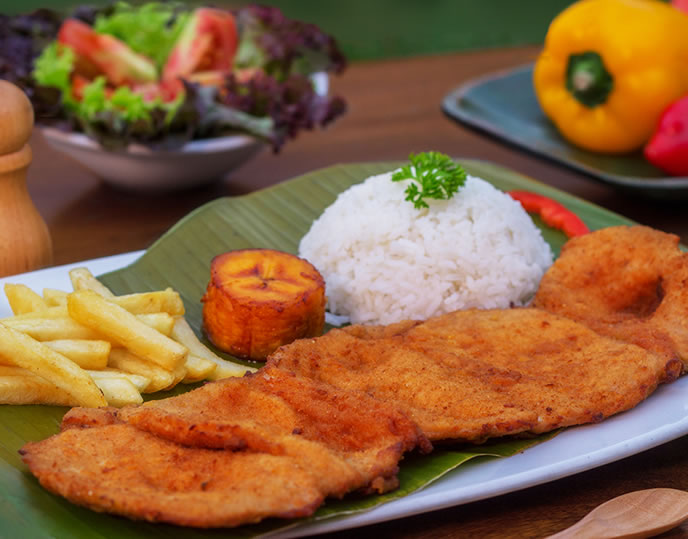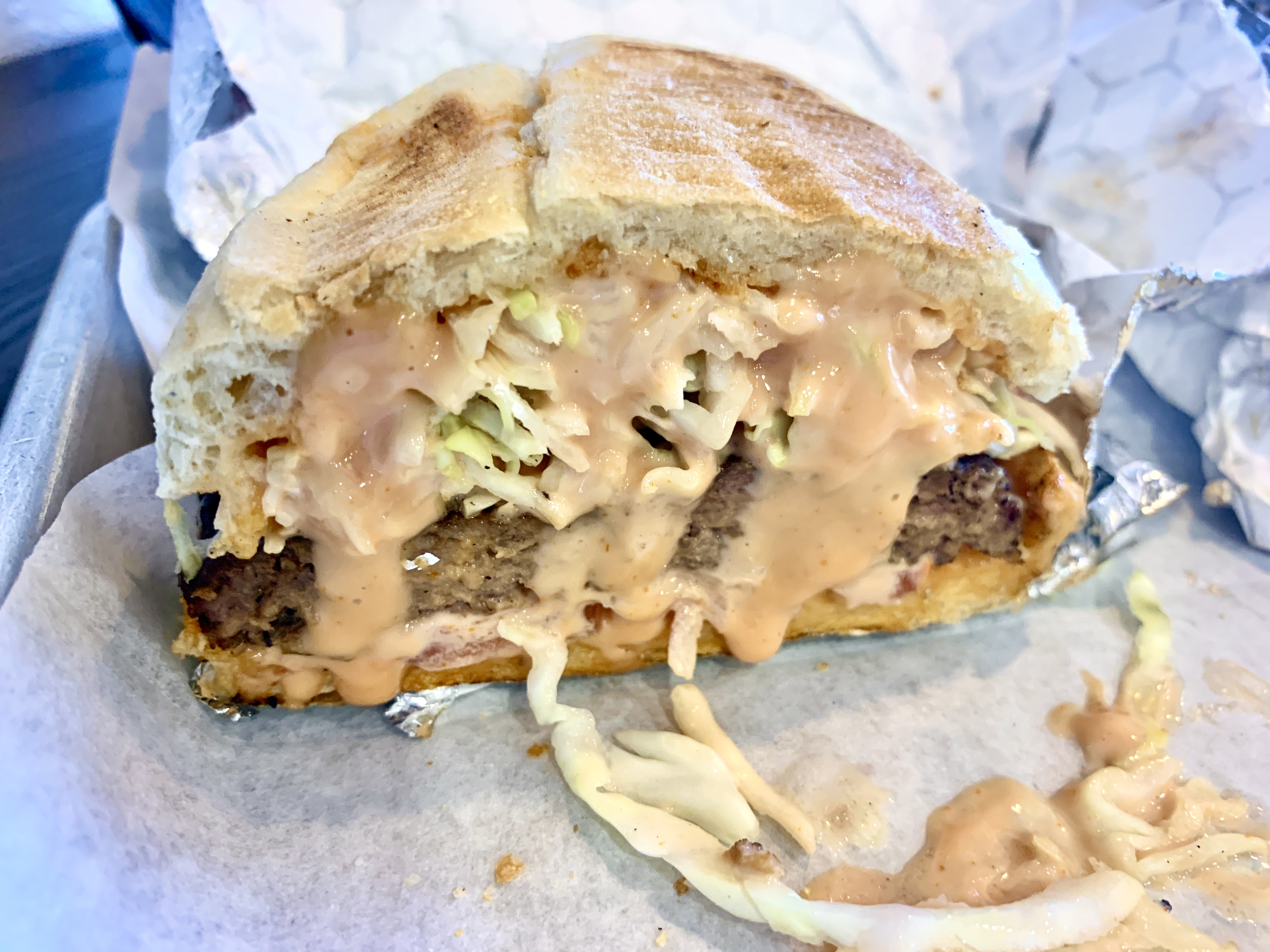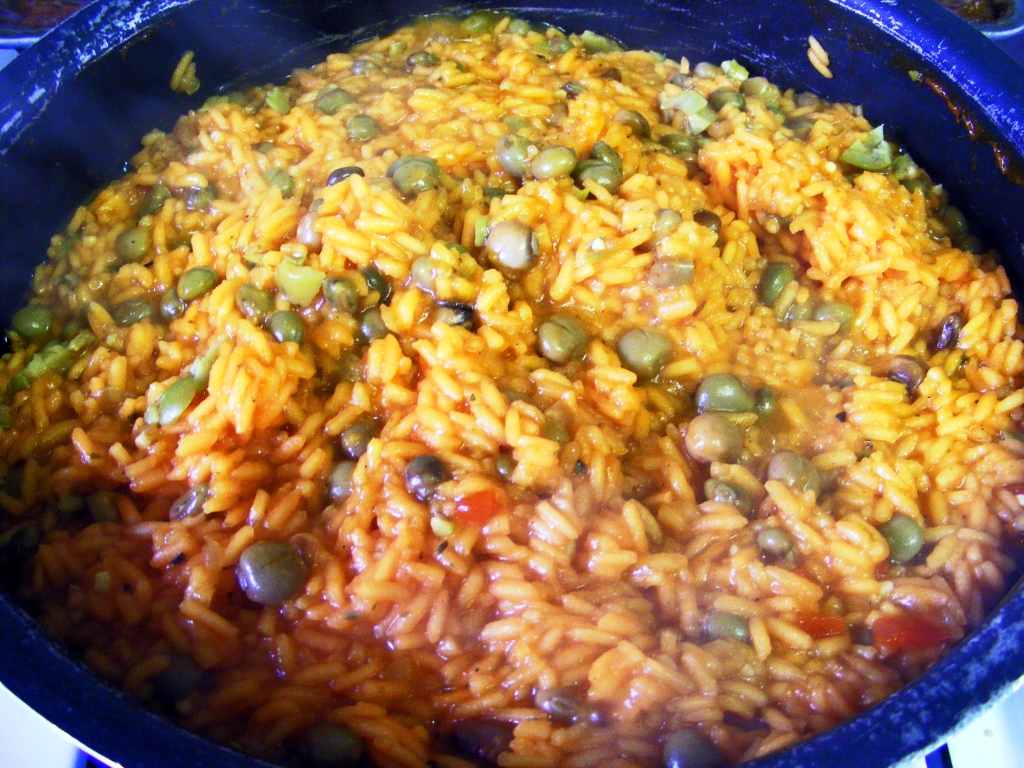|
Queso Frito
Queso frito (English: fried cheese) is a fried cheese dish. It consists of a white, salty cheese with a high melting point called ''queso de freír'' (Spanish: frying cheese), '' queso paisa'', or ''queso fresco'' (fresh cheese) or ''queso blanco'' (white cheese). ''Queso frito'' is made throughout South America, Puerto Rico, the Dominican Republic, and Mexico. See also * Fried cheese Fried cheese is a dish of cheese that is fried in oil. Fried cheese can be dipped in a batter before frying, and can be pan-fried or deep fried. It can be served as an appetizer or a snack. Fried cheese is a common food in Brazil and the Dominic ... References Colombian cuisine Dominican Republic cuisine Nicaraguan cuisine Puerto Rican cuisine Mexican cuisine Cheese dishes {{cheese-stub ... [...More Info...] [...Related Items...] OR: [Wikipedia] [Google] [Baidu] |
Melting Point
The melting point (or, rarely, liquefaction point) of a substance is the temperature at which it changes state from solid to liquid. At the melting point the solid and liquid phase exist in equilibrium. The melting point of a substance depends on pressure and is usually specified at a standard pressure such as 1 atmosphere or 100 kPa. When considered as the temperature of the reverse change from liquid to solid, it is referred to as the freezing point or crystallization point. Because of the ability of substances to supercool, the freezing point can easily appear to be below its actual value. When the "characteristic freezing point" of a substance is determined, in fact, the actual methodology is almost always "the principle of observing the disappearance rather than the formation of ice, that is, the melting point." Examples For most substances, melting and freezing points are approximately equal. For example, the melting point ''and'' freezing point of mercury is . How ... [...More Info...] [...Related Items...] OR: [Wikipedia] [Google] [Baidu] |
Queso Blanco
Queso blanco (), literally ''white cheese'' in Spanish, can refer to many different kinds of cheeses whose only common trait is their white color. The specific cheese referred to depends on the region. Production Queso blanco is considered one of the easier cheeses to make, as it requires no careful handling and does not call for rennet or bacterial culture. It is usually made by heating whole fresh milk to near-boiling, adding an acidifying agent such as vinegar, stirring until curds form, then draining the curds in cheesecloth for three to five hours. Such cheeses are also known as "bag cheeses," as the curds are normally hung in a bag of cheesecloth to drain. Many Mexican home cooks make their own instead of purchasing it; when made for the evening meal, it is often prepared in the early afternoon and left to drain until evening. As it is highly perishable, it must be refrigerated or used immediately once the whey has drained out. Common uses Queso blanco and queso fresc ... [...More Info...] [...Related Items...] OR: [Wikipedia] [Google] [Baidu] |
Queso Blanco
Queso blanco (), literally ''white cheese'' in Spanish, can refer to many different kinds of cheeses whose only common trait is their white color. The specific cheese referred to depends on the region. Production Queso blanco is considered one of the easier cheeses to make, as it requires no careful handling and does not call for rennet or bacterial culture. It is usually made by heating whole fresh milk to near-boiling, adding an acidifying agent such as vinegar, stirring until curds form, then draining the curds in cheesecloth for three to five hours. Such cheeses are also known as "bag cheeses," as the curds are normally hung in a bag of cheesecloth to drain. Many Mexican home cooks make their own instead of purchasing it; when made for the evening meal, it is often prepared in the early afternoon and left to drain until evening. As it is highly perishable, it must be refrigerated or used immediately once the whey has drained out. Common uses Queso blanco and queso fresc ... [...More Info...] [...Related Items...] OR: [Wikipedia] [Google] [Baidu] |
Puerto Rico
Puerto Rico (; abbreviated PR; tnq, Boriken, ''Borinquen''), officially the Commonwealth of Puerto Rico ( es, link=yes, Estado Libre Asociado de Puerto Rico, lit=Free Associated State of Puerto Rico), is a Caribbean island and Unincorporated territories of the United States, unincorporated territory of the United States. It is located in the northeast Caribbean Sea, approximately southeast of Miami, Florida, between the Dominican Republic and the United States Virgin Islands, U.S. Virgin Islands, and includes the eponymous main island and several smaller islands, such as Isla de Mona, Mona, Culebra, Puerto Rico, Culebra, and Vieques, Puerto Rico, Vieques. It has roughly 3.2 million residents, and its Capital city, capital and Municipalities of Puerto Rico, most populous city is San Juan, Puerto Rico, San Juan. Spanish language, Spanish and English language, English are the official languages of the executive branch of government, though Spanish predominates. Puerto Rico ... [...More Info...] [...Related Items...] OR: [Wikipedia] [Google] [Baidu] |
Dominican Republic
The Dominican Republic ( ; es, República Dominicana, ) is a country located on the island of Hispaniola in the Greater Antilles archipelago of the Caribbean region. It occupies the eastern five-eighths of the island, which it shares with Haiti, making Hispaniola one of only two Caribbean islands, along with Saint Martin, that is shared by two sovereign states. The Dominican Republic is the second-largest nation in the Antilles by area (after Cuba) at , and third-largest by population, with approximately 10.7 million people (2022 est.), down from 10.8 million in 2020, of whom approximately 3.3 million live in the metropolitan area of Santo Domingo, the capital city. The official language of the country is Spanish. The native Taíno people had inhabited Hispaniola before the arrival of Europeans, dividing it into five chiefdoms. They had constructed an advanced farming and hunting society, and were in the process of becoming an organized civilization. The Taínos also in ... [...More Info...] [...Related Items...] OR: [Wikipedia] [Google] [Baidu] |
Fried Cheese
Fried cheese is a dish of cheese that is fried in oil. Fried cheese can be dipped in a batter before frying, and can be pan-fried or deep fried. It can be served as an appetizer or a snack. Fried cheese is a common food in Brazil and the Dominican Republic, and is typically served as a breakfast dish in Costa Rica, Cyprus, Greece, Lebanon, Syria and Turkey. Fried cheese is served as a tapas dish in Spain; fried cheese balls are ''delicias de queso'' 'cheese delights'. Fried cheese is also found in Italian cuisine. Fried cheese is typically served hot, right after being cooked. It may be accompanied with a dipping sauce or coated with a dressing. History Fried cheese was a popular dish in Cairo during the Middle Ages, and remained a part of the cuisine under Ottoman rule. Since then, its popularity has decreased. Dishes Fried cheese curds are made from cheese curds and often served with a dipping sauce. Queso frito 'fried cheese' has many variations. Spanish versions sometim ... [...More Info...] [...Related Items...] OR: [Wikipedia] [Google] [Baidu] |
Colombian Cuisine
Colombian cuisine is a compound of the culinary traditions of the six main regions within Colombia (Pacific, Amazonian, Andean, Orinoco, Caribbean, and Insular). Colombian cuisine varies regionally and is particularly influenced by Indigenous Colombian, Spanish, and African cuisines, with slight Arab influence in some regions. Furthermore, being one of the most biodiverse countries in the world, Colombia has one of the widest variety of available ingredients depending on the region. History of Colombian food Colombian food is a unique blend of indigenous and European traditions with a strong Afro-Caribbean influence. The two largest indigenous groups prior to European conquest were the Tairona, who lived along the Caribbean coast, and the Muisca, who lived in the highlands to the South. Arepas, made from ground corn, are one of the oldest cooked dishes in Colombian cuisine. It is believed that the name derives from the word for corn in the Chibcha languages. Arepas are a popul ... [...More Info...] [...Related Items...] OR: [Wikipedia] [Google] [Baidu] |
Dominican Republic Cuisine
Dominican cuisine is made up of Spanish, indigenous Taíno, Middle Eastern and African influences. As in Spain, the largest, most important meal of the day is lunch. Its most typical form, nicknamed ''la bandera'' ("the flag"), consists of white rice, red beans and meat (beef, chicken, pork, or fish), sometimes accompanied by a side of salad. Dishes and their origins The Dominican Republic was formerly a Spanish colony. Many Spanish traits are still present in the island. Many traditional Spanish dishes have found a new home in the Dominican Republic, some with a twist. African and Taíno dishes still hold strong, some of them unchanged. All or nearly all food groups are accommodated in typical Dominican cuisine, as it incorporates meat or seafood; grains, especially rice, corn (native to the island), and wheat; vegetables, such as beans and other legumes, potatoes, ''yuca'', or plantains, and salad; dairy products, especially milk and cheese; and fruits, such as oranges, ba ... [...More Info...] [...Related Items...] OR: [Wikipedia] [Google] [Baidu] |
Nicaraguan Cuisine
Nicaraguan cuisine includes a mixture of indigenous Native American cuisine, Spanish cuisine, and Creole cuisine. Despite the blending and incorporation of pre-Columbian and Spanish-influenced cuisine, traditional cuisine differs on the Pacific coast from the Caribbean coast. While the Pacific coast's main staple revolves around beef, poultry, local fruits, and corn, the Caribbean coast's cuisine makes use of seafood and coconut. Cuisine Main staples As in many other Latin American countries, corn is a staple. It is used in many widely consumed dishes such as nacatamal and indio viejo. Corn is not only used in food; it is also an ingredient for drinks such as pinolillo and chicha as well as in sweets and desserts. Other staples are rice and beans. Rice is eaten when corn is not, and beans are consumed as a cheap protein by the majority of Nicaraguans. It is common for rice and beans to be eaten as a breakfast dish. There are many meals including these two staples; one popular ... [...More Info...] [...Related Items...] OR: [Wikipedia] [Google] [Baidu] |
Puerto Rican Cuisine
Puerto Rican cuisine has its roots in the cooking traditions and practices of Europe (mostly Spain), Africa and the native Taínos. History Puerto Rican cuisine has been influenced by an array of cultures including Taino Arawak, Spanish, and African. Although Puerto Rican cooking is somewhat similar to both Spanish and other Latin American cuisine, it reflects a unique blend of influences, using indigenous seasonings and ingredients. Locals call their cuisine ''cocina criolla''. By the end of the nineteenth century, the traditional Puerto Rican cuisine was well established. By 1848 the first restaurant, La Mallorquina, opened in Old San Juan. ''El Cocinero Puerto-Riqueño o Formulario'', the island's first cookbook, was published in 1849. Taíno influence ''See: Native American cuisine'' From the diet of the Taíno (culturally related with the Maya and Carib peoples of Central America and the Caribbean) and Arawak people come many tropical roots and tubers (collectively ... [...More Info...] [...Related Items...] OR: [Wikipedia] [Google] [Baidu] |
Mexican Cuisine
Mexican cuisine consists of the cooking cuisines and traditions of the modern country of Mexico. Its earliest roots lie in Mesoamerican cuisine. Its ingredients and methods begin with the first agricultural communities such as the Olmec and Maya who domesticated maize, created the standard process of maize nixtamalization, and established their foodways. Successive waves of other Mesoamerican groups brought with them their own cooking methods. These included: the Teotihuacanos, Toltec, Huastec, Zapotec, Mixtec, Otomi, Purépecha, Totonac, Mazatec, Mazahua, and Nahua. With the Mexica formation of the multi-ethnic Triple Alliance (Aztec Empire), culinary foodways became infused (Aztec cuisine). Today's food staples native to the land include corn (maize), turkey, beans, squash, amaranth, chia, avocados, tomatoes, tomatillos, cacao, vanilla, agave, spirulina, sweet potato, cactus, and chili pepper. Its history over the centuries has resulted in regional cuisines based on ... [...More Info...] [...Related Items...] OR: [Wikipedia] [Google] [Baidu] |





